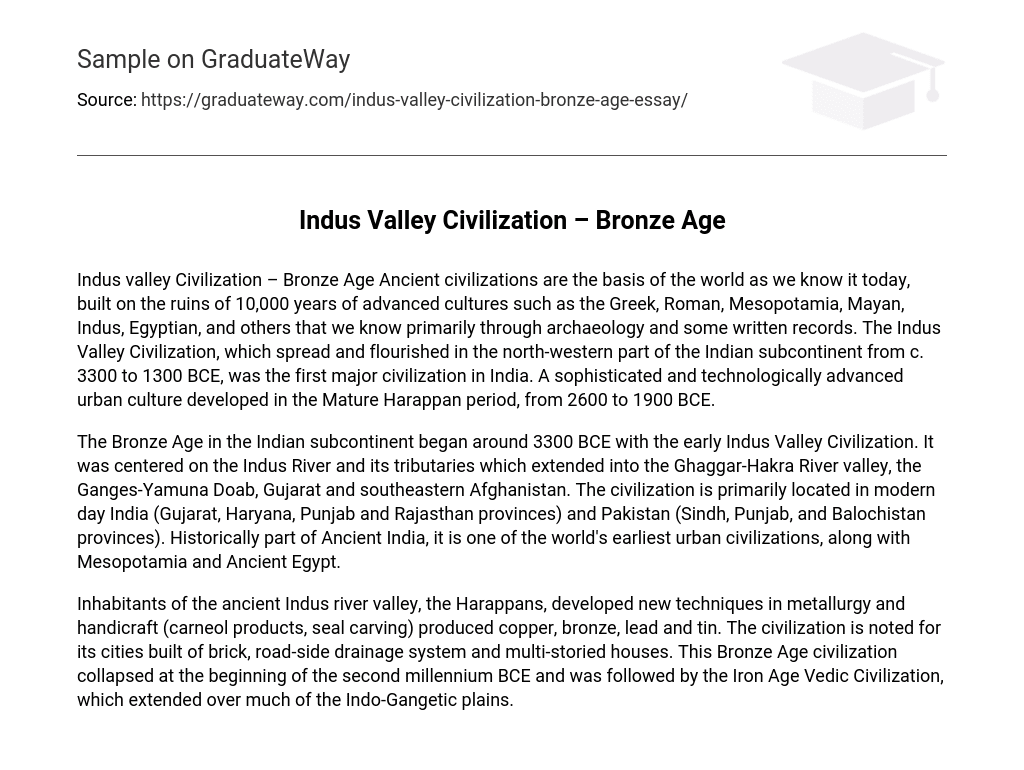Indus valley Civilization – Bronze Age Ancient civilizations are the basis of the world as we know it today, built on the ruins of 10,000 years of advanced cultures such as the Greek, Roman, Mesopotamia, Mayan, Indus, Egyptian, and others that we know primarily through archaeology and some written records. The Indus Valley Civilization, which spread and flourished in the north-western part of the Indian subcontinent from c. 3300 to 1300 BCE, was the first major civilization in India. A sophisticated and technologically advanced urban culture developed in the Mature Harappan period, from 2600 to 1900 BCE.
The Bronze Age in the Indian subcontinent began around 3300 BCE with the early Indus Valley Civilization. It was centered on the Indus River and its tributaries which extended into the Ghaggar-Hakra River valley, the Ganges-Yamuna Doab, Gujarat and southeastern Afghanistan. The civilization is primarily located in modern day India (Gujarat, Haryana, Punjab and Rajasthan provinces) and Pakistan (Sindh, Punjab, and Balochistan provinces). Historically part of Ancient India, it is one of the world’s earliest urban civilizations, along with Mesopotamia and Ancient Egypt.
Inhabitants of the ancient Indus river valley, the Harappans, developed new techniques in metallurgy and handicraft (carneol products, seal carving) produced copper, bronze, lead and tin. The civilization is noted for its cities built of brick, road-side drainage system and multi-storied houses. This Bronze Age civilization collapsed at the beginning of the second millennium BCE and was followed by the Iron Age Vedic Civilization, which extended over much of the Indo-Gangetic plains.





